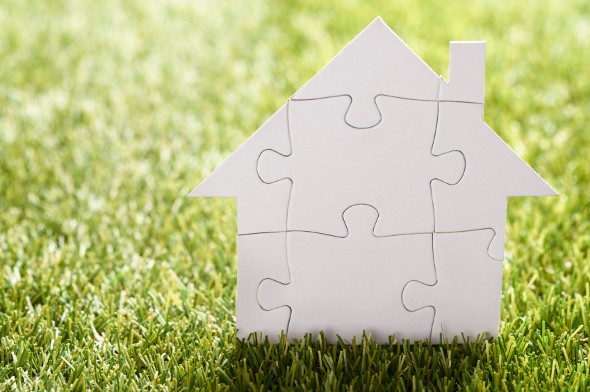
Building home equity is important. It’s your financial stake in your house and since it’s considered an asset, you can use your home equity to finance your kid’s college education, remodel your current house, buy another home or supplement your retirement savings. If you’re wondering how you can go about building equity, check out seven easy ways to get started.
1. Make a Big Down Payment.
Your home equity represents how much of your home you actually own. If your goal is to build as much equity as you can in a short span of time, you can opt to make a large down payment. Industry standards generally say that homebuyers with conventional loans should put down at least 20%, particularly if they want to avoid paying private mortgage insurance. That means putting down even 21% can increase your home equity more quickly. (Of course, this will give you more equity in your home but may not be where you want to put your money. It’s important to assess all of your financial goals before doing this.)
2. Focus on Paying Off Your Mortgage.
Your home equity is equal to your down payment plus the amount of money you’ve put toward paying off your mortgage. So you can build equity simply by making your monthly mortgage payments.
If you bought a $300,000 home and made a 20% down payment, you have a 20% stake ($60,000) in your house. As you pay off your mortgage little by little over time, your equity rises. To find out by how much, it’s a good idea to find out how much of your mortgage payments are going to interest and how much are going to the principal (the latter will help you build up equity.)
3. Pay More Than You Need To.

Another way to build equity is to go above and beyond what your lender expects of you. For example, instead of making a $1,000 monthly payment towards your mortgage, you could take it up a notch and pay $1,500 every month. If that’s not possible, you could try to make just one additional payment per year. It’s important to ensure with your lender that the extra money will go toward paying down the principal.
With your extra payments, you’ll be able to pay off your mortgage more quickly, build equity much faster and potentially save hundreds or even thousands of dollars in interest. That excess cash could then go towards paying off other loans or saving for retirement.
4. Refinance to a Shorter Loan Term.
A refinance can offer another opportunity to build equity. By refinancing your 30-year mortgage to a 15-year loan, you can finish paying your mortgage off in half the time and enjoy the benefits of having access to plenty of home equity. But since you’ll be speeding up the payoff process, you’ll be paying more money every month.
And keep in mind that a refinance isn’t guaranteed. To qualify, you’ll likely need to have good credit, a certain amount of equity already and a low debt-to-income ratio. Checking your score ahead of time will let you know whether you need to beef up your credit before applying.
If you can qualify for a refinance loan, it might be a good idea to steer clear of a cash-out refinance. You’ll end up with a bigger mortgage than you started with. Plus, it’s counterproductive if you’re on a mission to build home equity (since you’ll get cash in exchange for the equity you already have).
5. Renovate the Inside of Your Home.
Making improvements to your home’s interior can help you raise its overall property value. And the good news is that these alterations don’t necessarily have to be expensive. You can remodel portions of your home on the cheap by repainting the walls in your kitchen or updating your light fixtures, for example.
6. Wait for Your Home’s Value to Rise.

Patience is a virtue. If you’re not in a rush to use the home equity you’re building, you could wait until your home’s value goes up on its own. History shows it will likely happen naturally. Additionally, as the market adjusts and home prices increase, the appreciation will boost your equity too. Of course, anything can happen and your home’s worth and your equity could decline unexpectedly as well.
7. Add More Value.
The outside of your home could probably use some TLC as well. Giving your grass a fresh cut, adding in some flowers or installing shutters can certainly make a difference when it comes to improving your home’s value once it’s time to sell.
Bottom Line
Fortunately, there’s more than one way to build home equity. So if paying off your mortgage early isn’t possible, you can make budget-friendly adjustments or try to refinance. As your equity interest rises, you’ll be able to tap into it. Then, you can potentially use that cash for other financial goals.
Tips for Owning a Home
- Including you home value and plans in your retirement plan can be helpful as you build a long-term financial plan. A financial advisor can help with this. Finding a financial advisor doesn’t have to be hard. SmartAsset’s free tool matches you with up to three vetted financial advisors who serve your area, and you can interview your advisor matches at no cost to decide which one is right for you. If you’re ready to find an advisor who can help you achieve your financial goals, get started now.
- Homeowners insurance is a necessity for many Americans. Understanding ways you can save money on your insurance costs can prove to be helpful over time. Check out SmartAsset’s guide here.
Photo credit: ©iStock.com/AndreyPopov, ©iStock.com/Susan Chiang, ©iStock.com/gremlin